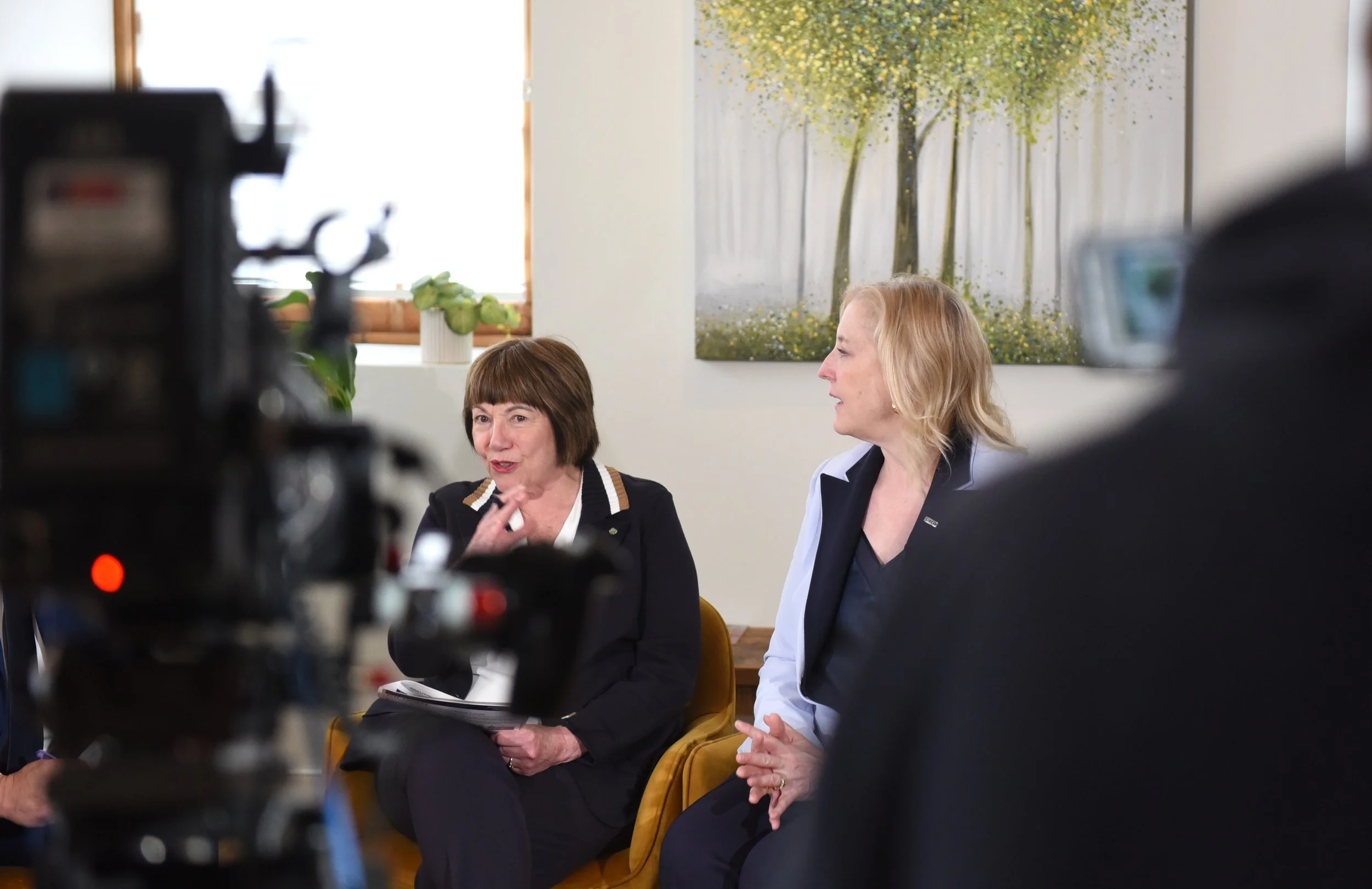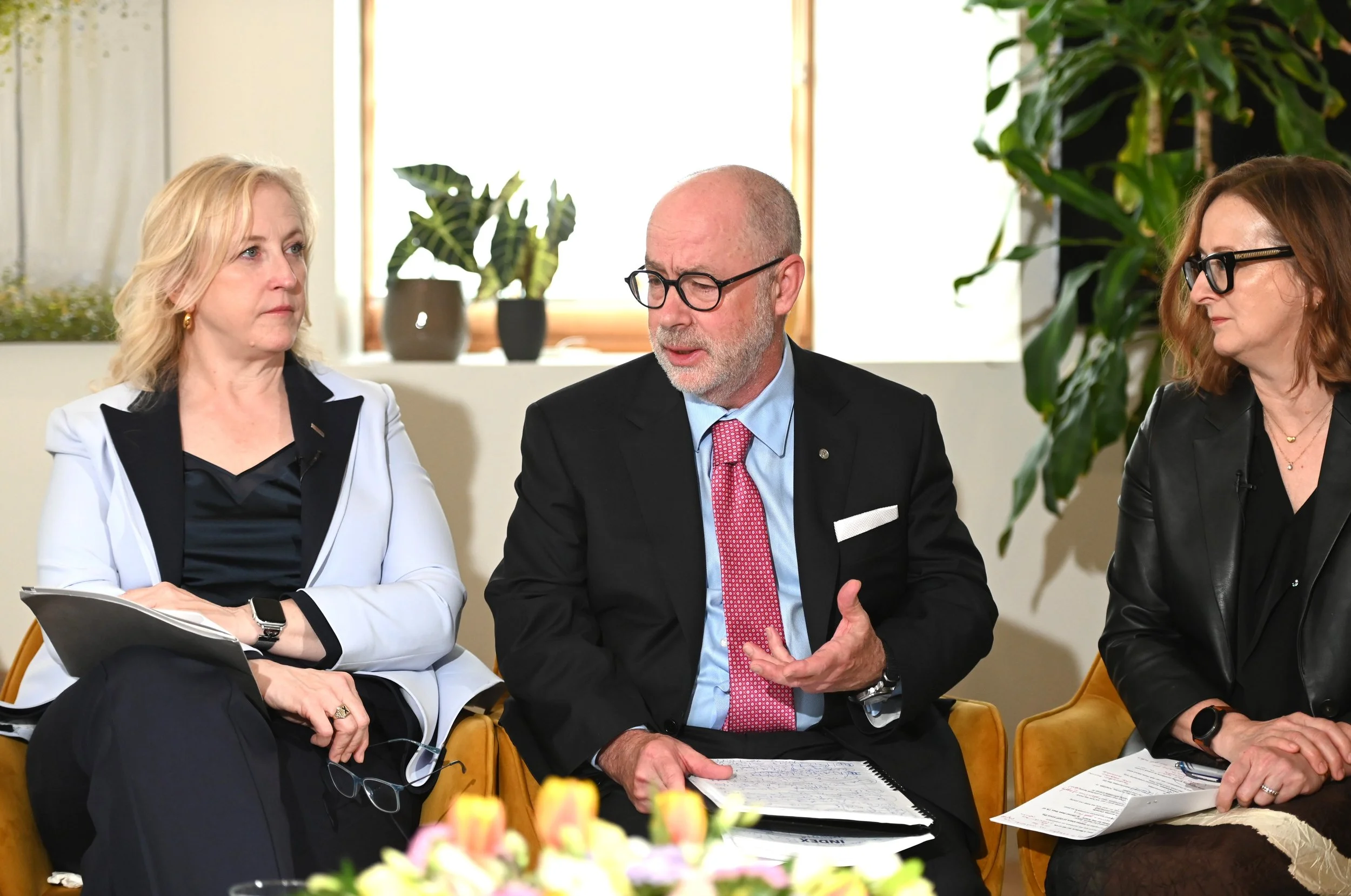Prosperity scorecard: Canada, ‘we have a problem’
Canada’s economic progress is stalling, with prosperity indicators flat or falling, and it should serve as a wake-up call for policymakers, said panelists at the Coalition for a Better Future reporting event on May 22.
The Coalition’s annual Scorecard, which includes 21 internationally recognized metrics, highlights stagnant GDP per capita, declining household after-tax income, falling investment in research and development, and a rising poverty rate. Globally, Canada’s competitiveness is also slipping.
Titled Off Target—Canada’s Uncertain Path to a Better Future, the report is based on four years of data. It provides a clear trend, said Coalition Co-chair, Hon. Lisa Raitt during a panel discussion moderated by CPAC anchor Michael Serapio. “Now we can actually tell governments across the country that we have a problem,” Raitt said. “How people are feeling about the economy can no longer be denied.”
“What we’re seeing is that either progress has flat-lined or in fact the numbers are going in the wrong direction,” said Coalition Co-chair, Hon. Anne McLellan. “The trends are not good for the Canadian economy and individual Canadians’ prosperity and quality of life.”
“The trends are not good for the Canadian economy and individual Canadians’ prosperity and quality of life.”
Anne McLellan, Co-chair, Coalition for a Better Future
Photo: Melanie Shields
Renewed urgency on growth
Digging into the question of how to address these trends, panelists including Power Corporation of Canada Senior Vice-President Paul Genest and Carolyn Wilkins, External Member of the Bank of England’s Financial Policy Committee, agreed that U.S. President Donald Trump’s tariff policies have created an emergency that has galvanized Canadians’ commitment to work together urgently in a way not seen in years.
It’s a good sign Canadians now seem to be seized with the need to advance the productivity and growth agenda the Coalition has been stressing, said Genest. That agenda hasn’t been central to policies of national and provincial governments, he said. “It’s nice to see that, frankly, both the leading parties campaigned on items that we have been advocating for some time.” Now the challenge is to actually get improvements done.
The discussion highlighted key solutions to a more prosperous future, including eliminating interprovincial trade barriers, streamlining regulatory processes to unlock investment, better utilizing immigrants' professional experience, building infrastructure, and forging business-government cooperation.
Coalition for a Better Future co-chair Lisa Raitt (left) with Senior Vice-President of Power Corporation of Canada, Paul Genest and Former Senior Deputy Governor of the Bank of Canada Carolyn Wilkins discuss the Coalition for a Better Future’s Scorecard Report. PHOTO: MELANIE SHIELDS
Ring of Fire, a cautionary tale
Wilkins said governments can increase business investment by working more cooperatively with the private sector to reduce the barriers to approval and completion of major projects. The stalled Ring of Fire mineral deposits in Northern Ontario is a classic example of the lack of effective action, she said. Political leaders need to reverse a situation where public servants feel that “building a business-friendly environment” is a negative, where new investments are taxed inefficiently and where permitting takes too long.
As businesses in this country work their way through the downsides of Trump’s tariffs, Deloitte Canada chief economist Dawn Desjardins said Canadians “have to shore up a culture of risk-taking” so new factors such as AI are put into practice across the entire business sector. A recent Deloitte survey showed 26 per cent of Canadian companies are using AI. Getting more companies to do so is the kind of cutting-edge progress that can improve productivity and economic performance, she said.
Stephen Tapp, president of the Centre for the Study of Living Standards, and Canadian Bankers Association Head Economist Alex Ciappara said the shake-up resulting from the disruption of U.S.-Canada trade opens the way for significant changes in Canada’s economic goals, including diversifying trade away from the U.S. to Europe and the Pacific and renewing nation-building projects.
Railways, airports, digital infrastructure
This change in Canadians’ attitudes provides an opportunity to enhance public-private cooperation on “building big infrastructure trade-enabling projects to get our goods, services and people to markets for the 21st century — so more ports, more railways, airports, highways and digital infrastructure to support AI data centres,” Ciappara said.
An essential ingredient in moving ahead to improve the economy is increased multi-level collaboration among Canadians, said Lisa Stillborn, vice-president of public affairs at the Canadian Fuels Association. “The only way to unlock the type of investment we’re talking about, to meet the challenges we’re facing at the moment, is to bring the East and the West together — rural and urban communities, governments, industries and Indigenous communities.”
She cited the energy sector, which already has useful, job-creating synergies with businesses in agriculture and forestry.
“The only way to unlock the type of investment we’re talking about, to meet the challenges we’re facing at the moment, is to bring the East and the West together — rural and urban communities, governments, industries and Indigenous communities.”
Lisa Stillborn, Vice-president, Public Affairs, Canadian Fuels Association
Photo: Melanie Shields
Opportunities in agriculture
Farm Credit Canada Executive Vice-President Todd Klink and Shamira Madhany, Managing Director for Canada of World Education Services, discussed the need to coordinate efforts nationally to take advantage of Canadian talents and skills to improve the economy. The agriculture and food sector needs to build bridges to Canadians so that professionals and skilled people will begin to think about careers in that industry, which has plentiful opportunities for qualified people, Klink said.
When it comes to strengthening the economy, Madhany said Canadians need to focus on immigration. “We have a million immigrants who have been coming every three years who are highly skilled, and their skills should be leveraged,” she said. Because of roadblocks that immigrants face in attaining professional qualifications, Canada is losing the benefits offered by these highly skilled people, Shamira said.
McLellan said Prime Minister Mark Carney has stressed his commitment to bring Canadians together and build an upgraded, stronger economy. But pollster Nik Nanos and Theo Argitis, The Hub Canada’s editor-at-large, pointed out Carney’s task could be an uphill climb. The new prime minister faces a politically polarized country, disaffected youth who are impatient for improvements from government and burgeoning alienation in Saskatchewan and Alberta, they said.




